Practical tips for watering the garden
When temperatures are increasing in the summer months and there's been no sight of rain for days, what this means for garden owners is that flowers, vegetable plants and the lawn must be regularly watered. But what must you consider when watering the garden? With these tips, the garden will get through the warm season easily.

When and how should I water my garden?
Regularly watering the lawn as well as ornamental and cultivated plants and flowers is mandatory and a requirement for a green garden landscape. But there are a few things to consider when watering the garden. Above all, the time, the equipment and the right pouring and watering technique are relevant here. You should also know that plants and soils have different needs; you should comply with these when it comes to watering and maintenance.
Five tips for watering the garden correctly
The right time:
Morning or mid-morning is the ideal time for watering the garden. Especially in the summer, when it is very hot during the day, the water can thus gradually trickle into the ground at what are still mild temperatures. You should never water your garden in the midday sun, as otherwise the water will evaporate quickly and possibly cannot penetrate into the roots at all. Many people with jobs therefore generally water the garden in the evening after work. This is also an option, but it can have the undesired effect of attracting snails, as the leaves stay moist for a very long time – a paradise for garden pests
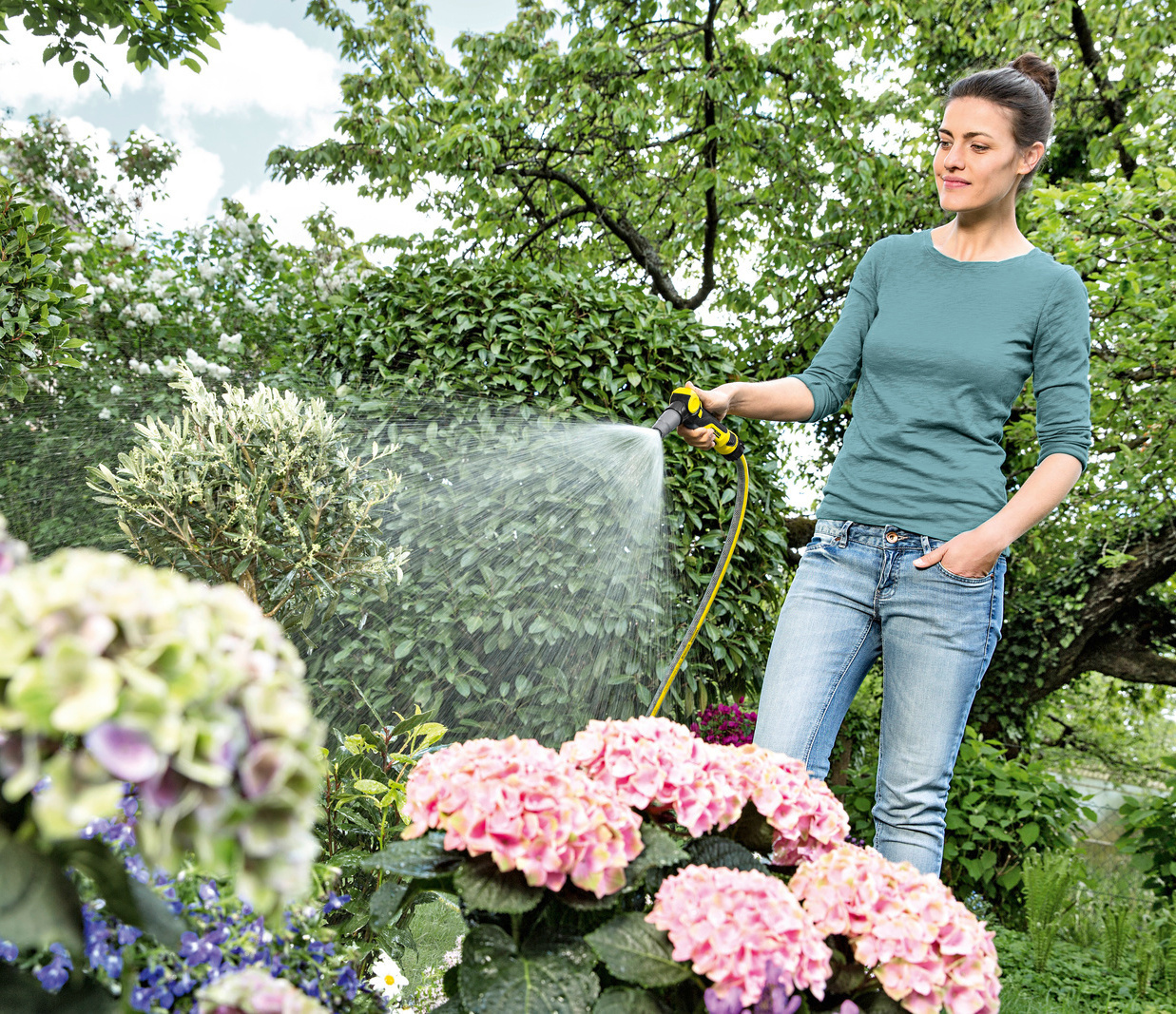
Watering equipment:
Ask yourself the following question in advance here: Which water source would I like to use, and how does the water get from there to the plants? Three water sources are essentially available for watering the garden. Either you use collected rain water from a collection tank or ground water from a well, or you connect a traditional hose or the watering system to the house's water connection. The latter is considerably more expensive, which means that investment in a watering system with a pump, for example, may be worth it. In terms of the equipment for water distribution, there are numerous options: Sprinklers, hoses, nozzles, pumps and water timers (information on these further down). There are suitable hose trolleys or hose reels for storage, for example for the hose system.
Regularity:
The guiding principle when watering the garden is: Regular watering comes up trumps! Plants and beds should therefore be amply watered so that the water can trickle deep into the ground and thus get to the roots. In any case, you should avoid watering the garden every day. This is not only expensive and energy-intensive, but also not at all necessary. How often the garden should be watered also depends on the soil texture. You can remember this rule of thumb: Water sandy soils approximately every four days, clay soils once a week.
Considering the needs of plants and soils:
You should avoid very cold water. Cold tap water causes stress for most plants. It is better to use water from a water butt and dispense it using a booster pump. You can of course also use tap water to water the garden, although it entails some disadvantages compared with watering the garden with ground water or rain water. The water is much colder, which causes stress for plants and flowers. You also need to know what the local water quality is like. Hard water damages plants. A blanket watering plan is difficult, as the water demand of different plants varies. Bedded plants require less water than potted plants. In order to develop a feel for how much water a plant needs, you often only need to take a look at its leaves. Numerous thin and soft leaves indicate a high demand for water. Plants with thick, hard or hairy leaves require less water. The largest water consumer in the garden is the lawn. Especially for sandy soils, you should blast the lawn three to four times a week. On the other hand, clay soils store more moisture, so thoroughly watering the garden once a week is sufficient.
When winter is approaching:
Removing water from your own garden watering system is an issue every year for garden lovers when it comes to making the garden winter-proof. Dirty water pumps, for example, are suitable for removing water from ponds and wells, while flat-suctioning submersible clear water pumps can be used for pools.
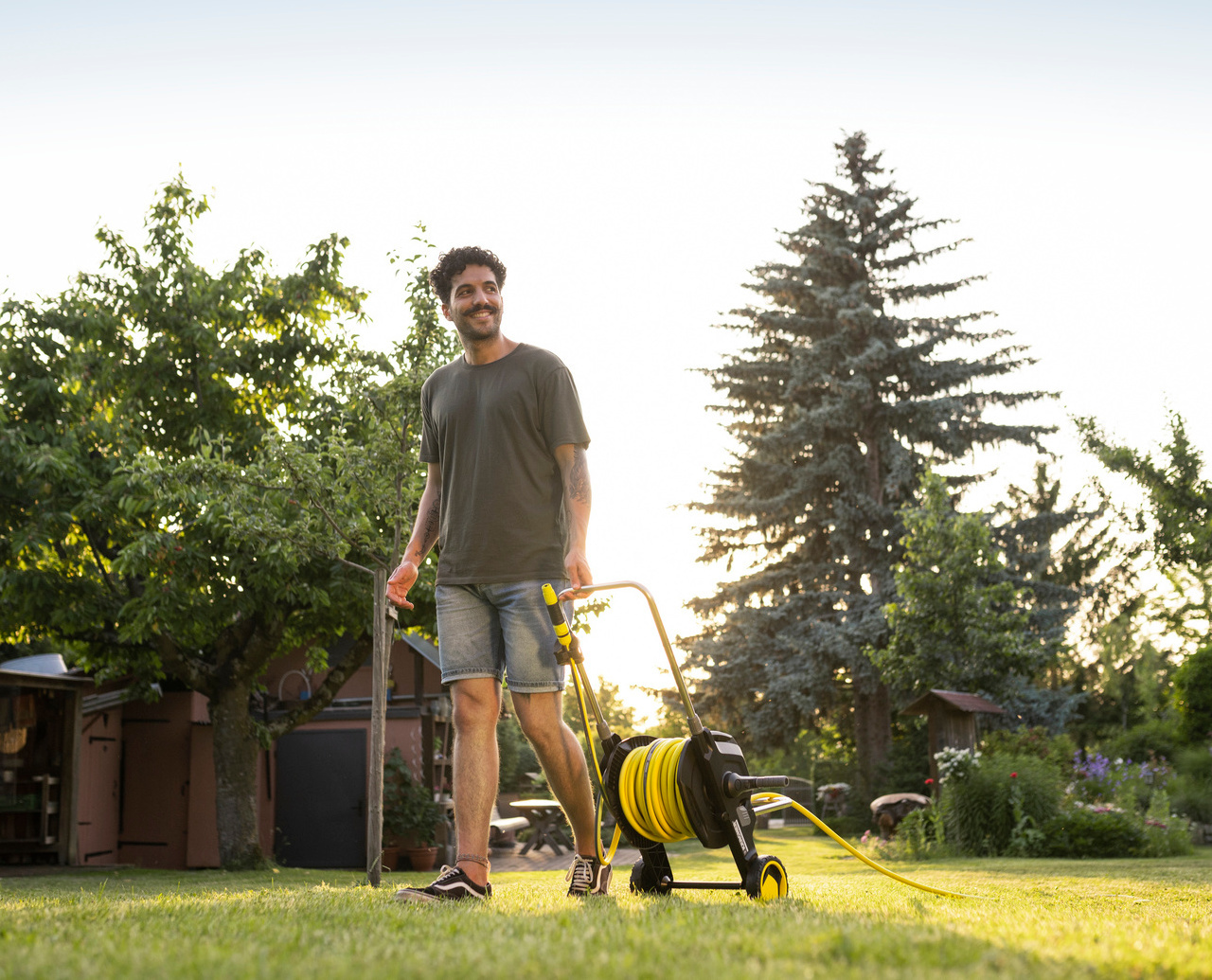
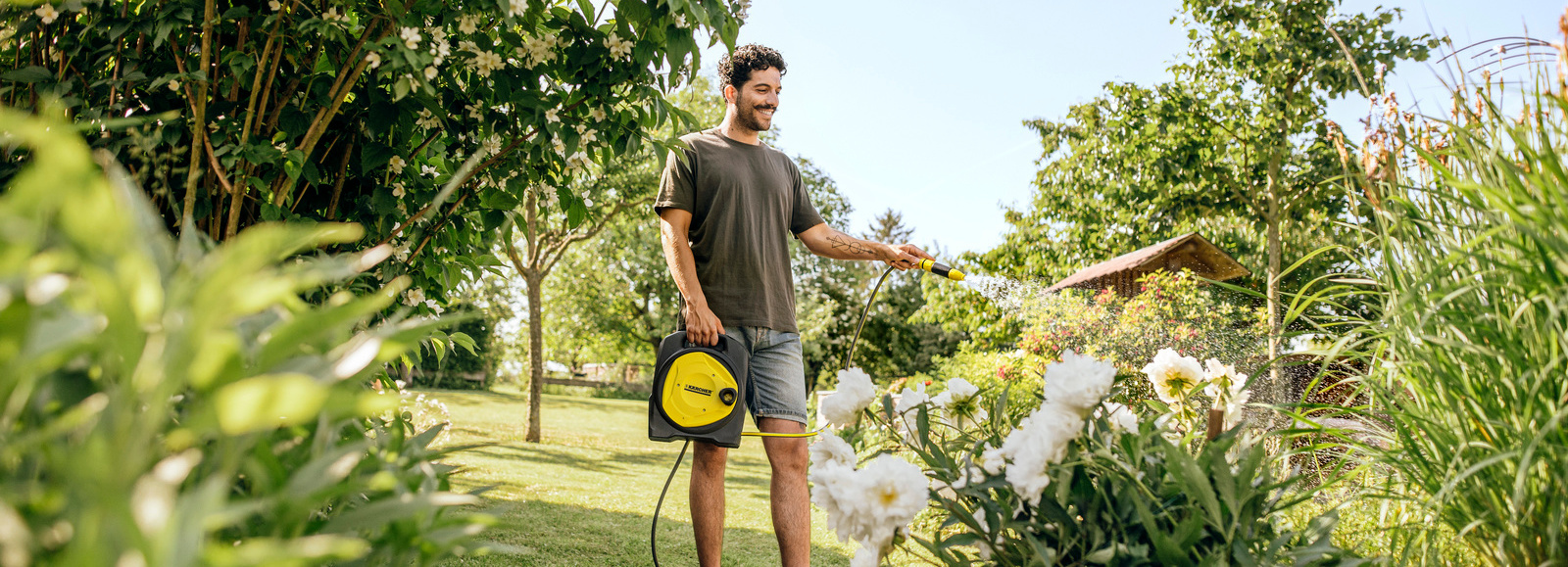
Watering with a watering can, hose or watering system?
For earlier generations, the question of the appropriate equipment for watering the garden did not even arise. A watering can was the only option. Today, the starting point is totally different. There are numerous tools such as mobile sprinklers and spray guns with a spraying function, and even complete watering systems (e.g. rain water pumps). So which piece of equipment will meet your personal requirements?
The watering can still always belongs amongst the basic equipment. Despite the multitude of modern and efficient devices for watering the garden, you can still always find the watering can in almost every garden. It is perfectly suited to ensuring that potted plants and beds are watered on time. You can also carefully water ornamental plants with it using a shower attachment. But the decisive disadvantage remains – the multiple refilling and carrying of the watering can requires strength and can quickly lead to back and shoulder pain.
Water your garden yourself or have it watered for you? For larger areas, watering with a hose alone is only sensible to a limited extent. If you're only talking about watering a small area of lawn, you can resort with a clear conscience to using a hose together with a sprinkler or spray lance yourself. Kärcher hoses are robust and are designed so that they do not kink, which hugely increases their durability.
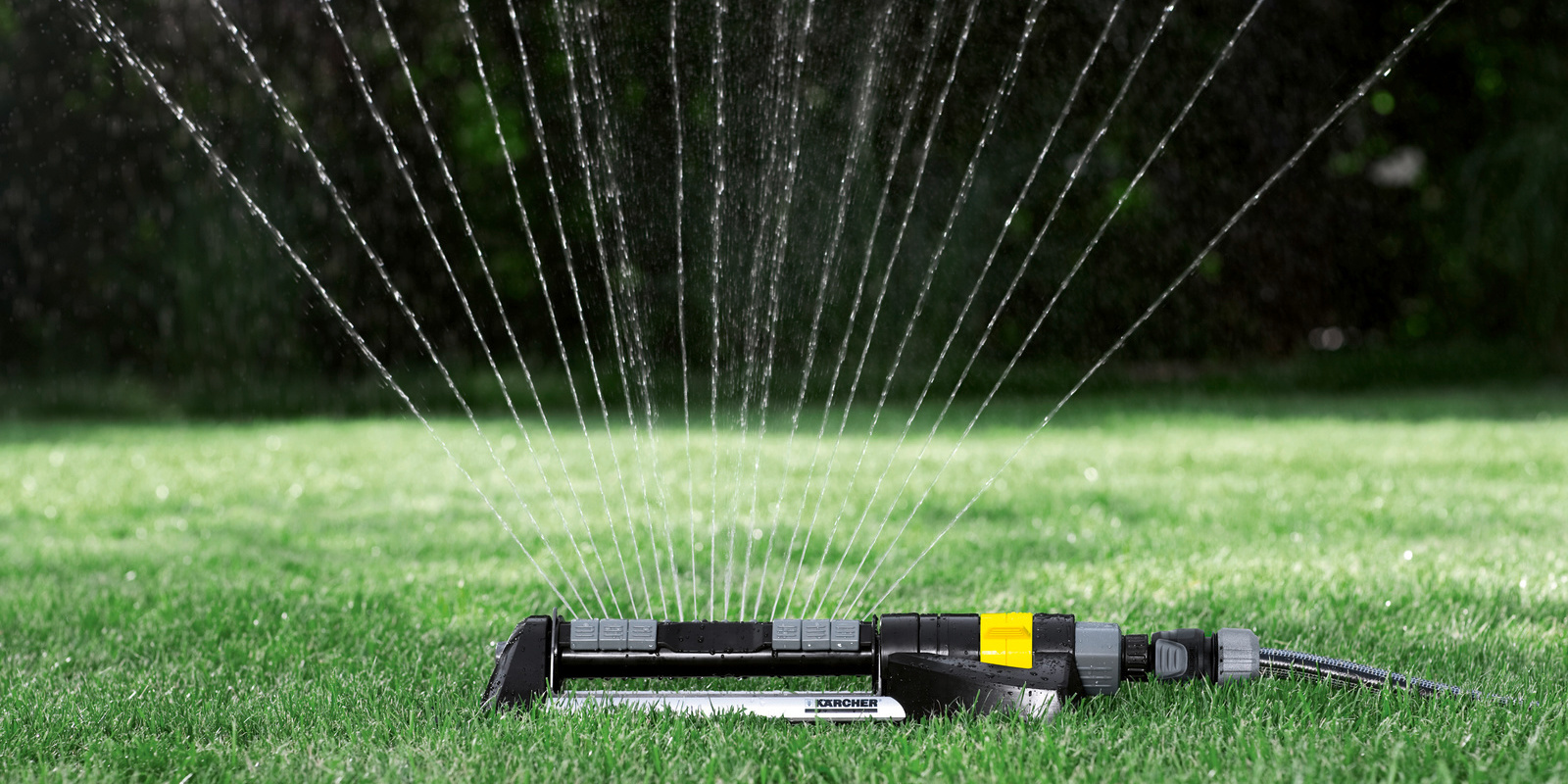
For larger garden areas, on the other hand, it's better for you to resort to watering systems. Even just a sprinkler that you've connected via a hose either with the water connection or with a pump should suffice for many. Mobile sprinklers are especially well-suited to this. These are fitted with an adjustable width of spray, so that you can manually adjust the range and the water volume – this enables effective watering of the garden. What is important here is that the sprinkler should be selected according to the shape and requirements of the area to be watered.
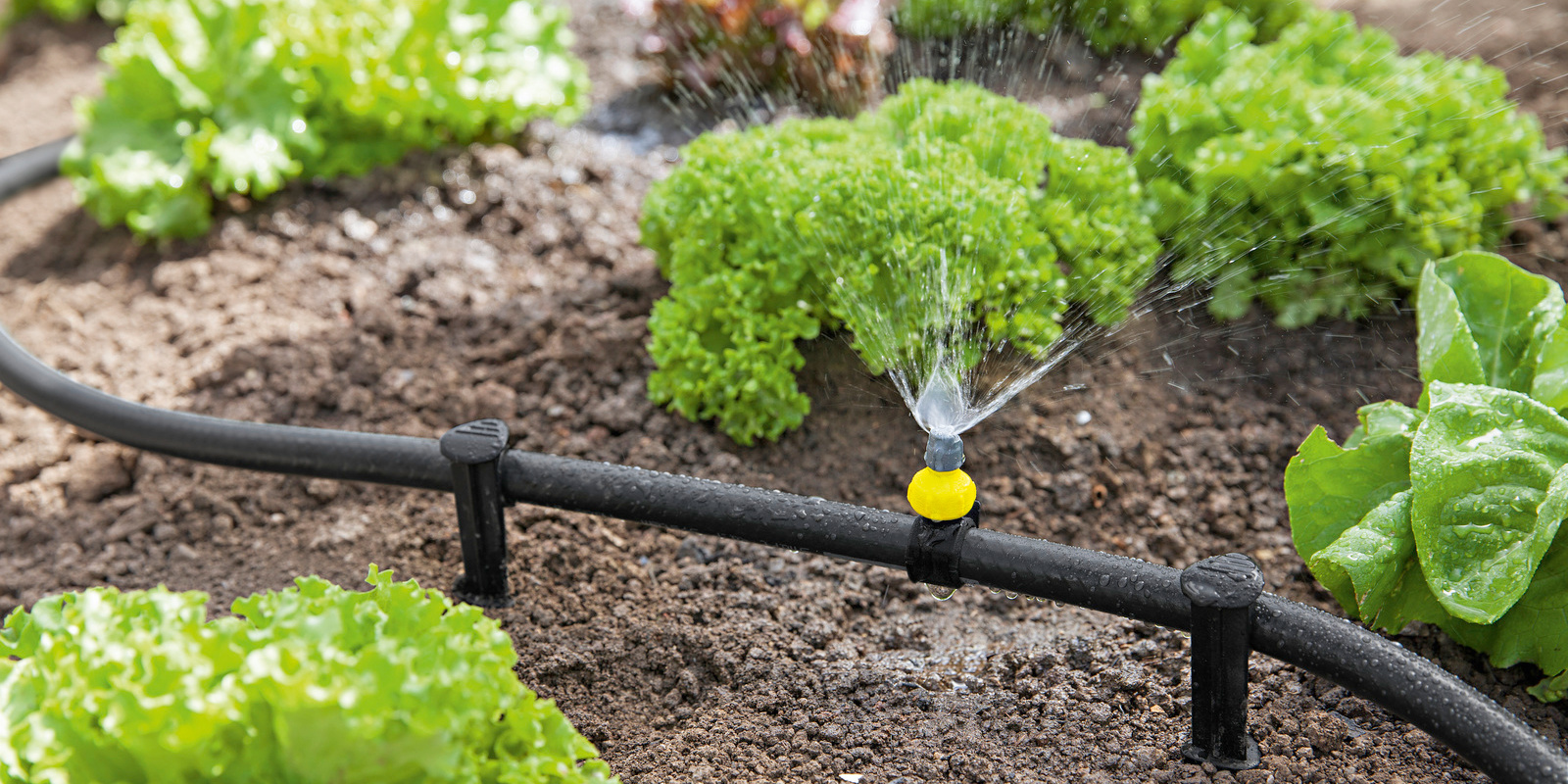
Watering system: Effective and water-conserving! Anyone who wants to approach things even more professionally can use pump and watering systems perfectly coordinated with each other. Such watering systems allow not only time-saving and simultaneously effective watering, but are also resource-conserving and sustainable. The water is thus dispensed in a targeted manner to the individual plant or lawn areas.
How watering the garden with rain water works
How the setup for watering the garden ultimately looks naturally depends on personal taste and the available garden area. As a passionate amateur gardener, you should in any case know what advantages watering your garden with rain water offers. Firstly, this method does not incur any water costs and is especially environmentally friendly. Secondly, rain water has a decisive advantage over tap water – rain water is the natural form of distilled water and free of germs and impurities. It's true that our tap water is also very clean, but it can differ in hardness from region to region, or, for example, contain unwanted deposits due to older pipelines. If you really wanted to play it safe, you would first have to check the water quality.
Rain water is by nature pure and has a neutral pH value. Garden lovers only have to ask themselves how they want to collect it. Cisterns, deep wells and water butts are all options; the rain water they have collected can be effectively dispensed in the garden using barrel pumps or booster garden pumps as well as hose and sprinkler systems.
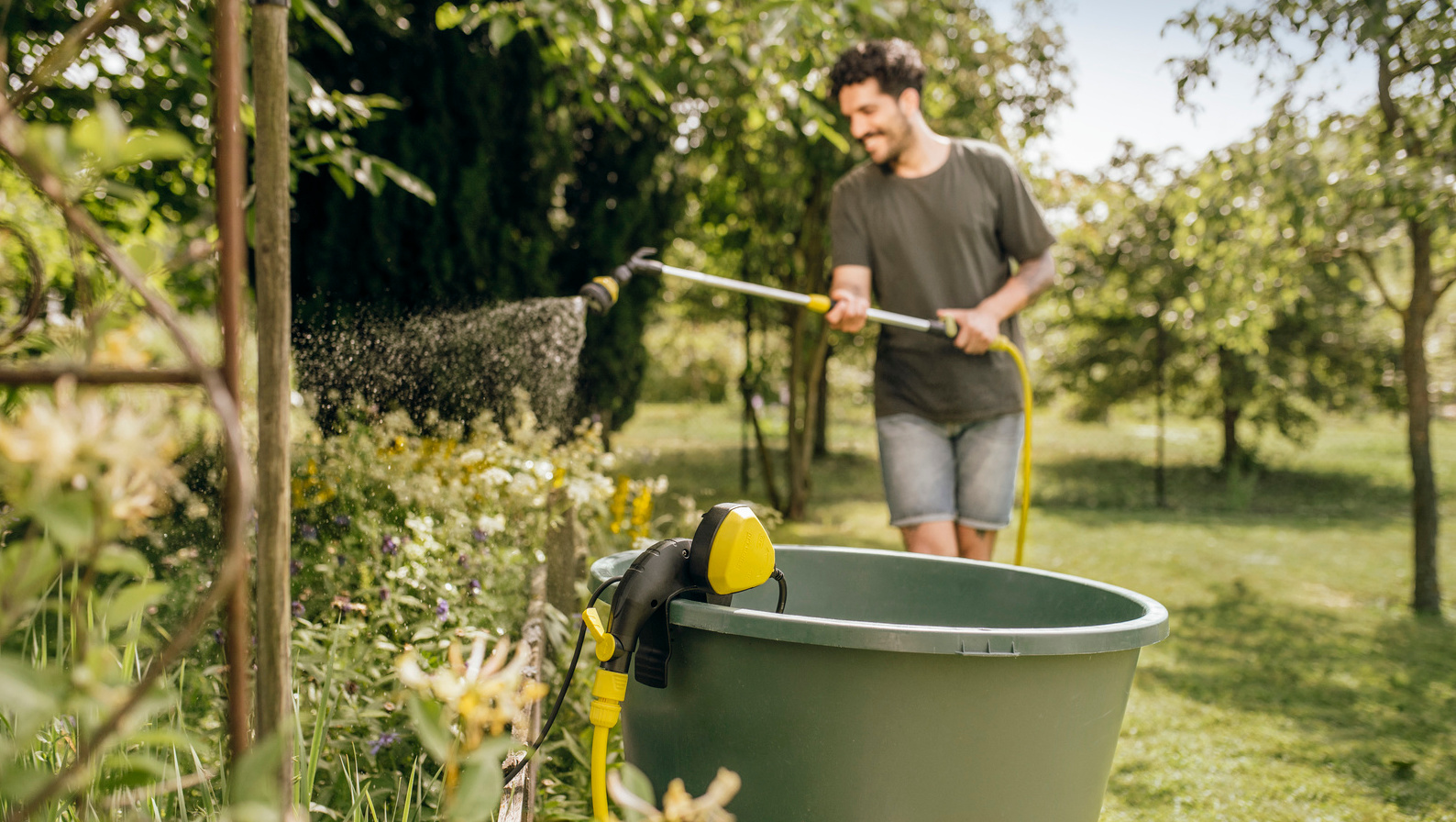
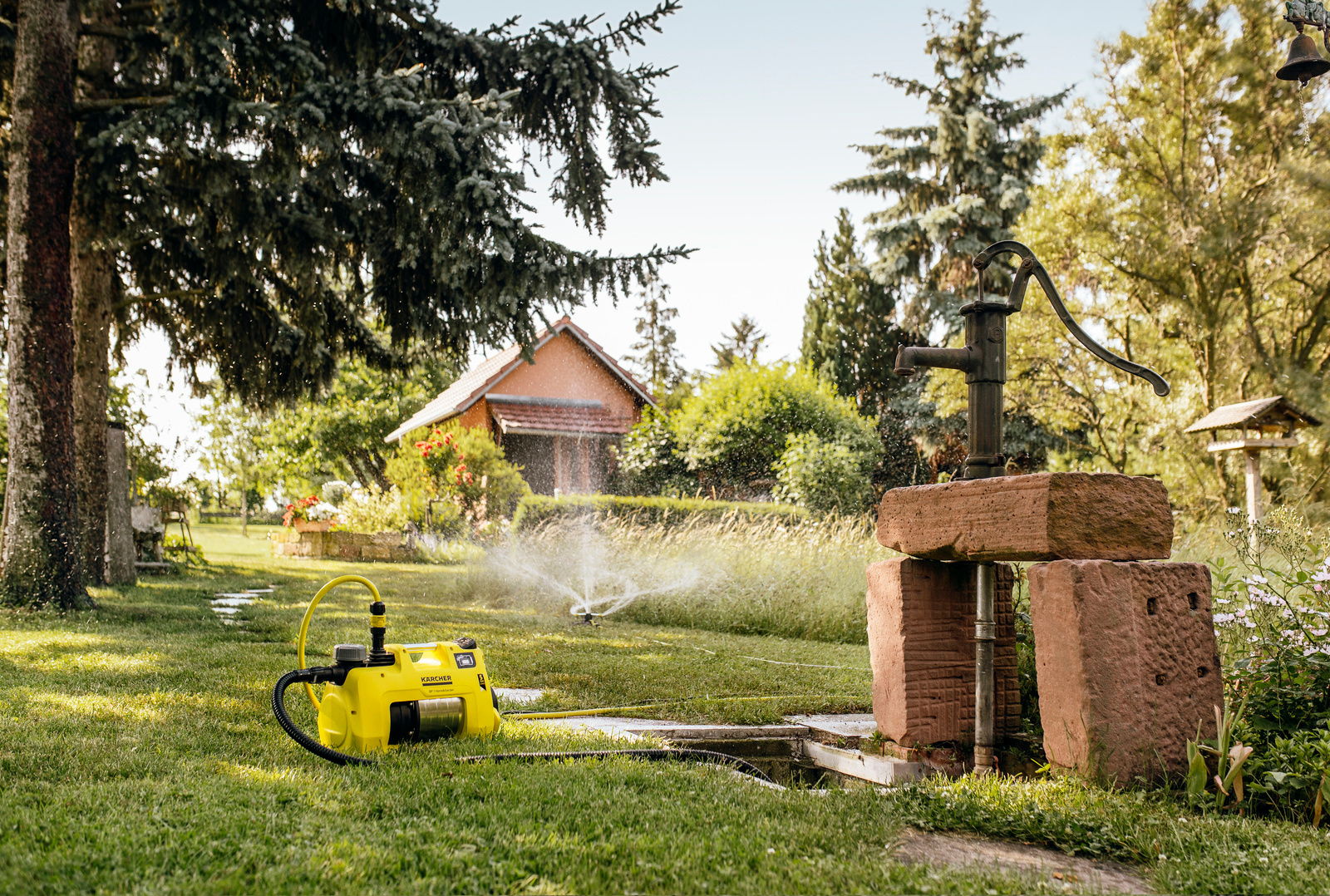
Watering the garden with ground water and water from wells
Just as when watering the garden with rain water, you don't need to be concerned about the water quality when watering with ground water or water from wells. If you want to use it to water the garden, you should find out about the ground water level in advance. You can find this out from the local water authority. Your neighbour may already be able to give you information on this through a chat over the garden fence. Generally, the issue of watering the garden with ground water and water from wells is a financial question. Watering the garden with tap water means ongoing costs, whereas building a well is a one-time investment and is generally recouped after just a few years. In any case, it is worth checking this precisely. Another thing you should not forget is that if you want to build a well, this must be registered with the responsible municipality. You should always find out about the local permit requirements and legal restrictions in advance.
Supplying your garden with your own well water is an environmentally friendly alternative to watering with tap water. To guarantee that the water from the well can be dispensed to the plants and beds, you also need a pump. Watering with booster pumps is of special interest for this. With a pumping capacity of up to 7000 litres an hour, the robust and long-lasting pumps are perfectly suited to conveying water from pond water and water from wells.
Automatic watering with a pump
You can save a lot of time and water your garden in a needs-oriented and effective manner by using automatically controlled watering. Using watering sensors and water timers, you as a garden owner have full control over when and how much of the garden area should be watered. The system can, for example, be programmed so that it switches itself on in the early hours of the morning, when everyone is still asleep. An automatic watering system is likewise the ideal solution if you want to travel but don't have anyone on hand who could take on the time-consuming watering of your garden. Find out here what automatic watering with water timers or watering clocks depends on.










